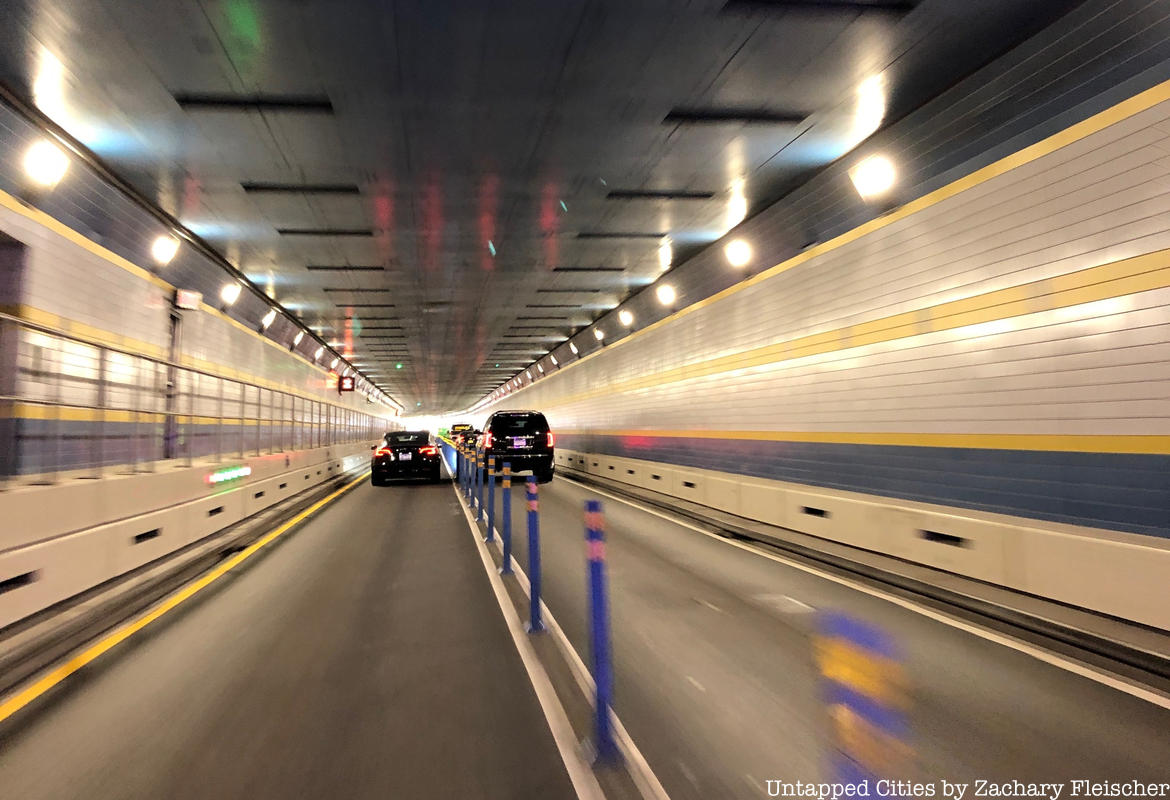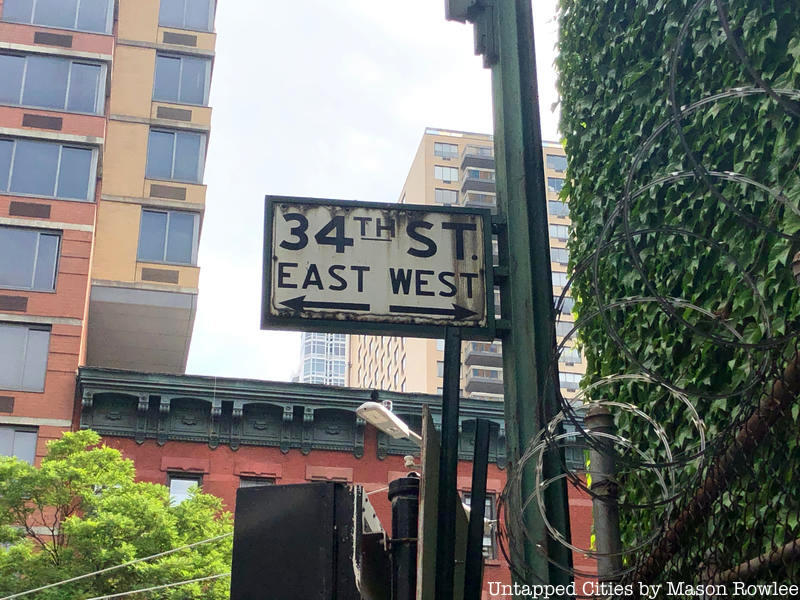
Opened in 1940 by the New York Tunnel Authority, the Queens-Midtown Tunnel is one of the largest public works projects of the New Deal era — constructed to alleviate congestion on the East River bridges, which were flooded with cars, trolleys and the subway at the time. Comprised of twin tubes made up of four traffic lanes, the Ole Singstad-designed tunnel spans 6,414 feet long and connects Queens to Midtown Manhattan.
In the many years since its groundbreaking, the Queens-Midtown Tunnel remains just as vital to New York City as it did when it first opened to traffic. Here, we’ve rounded up 11 of our favorite secrets about the tunnel:
11. 1940s-Era Queens Midtown Tunnel Street Signage is Still Intact

Have you spotted the functionally named “Tunnel Exit” Street between 34th and 35th Street? It’s the Queens Midtown Tunnel exit street, that is. Alongside a wall of tenement brick, shrubbery, and barbed wire hangs a beautiful and pretty well-maintained original tunnel sign from the 1940s, when the tunnel was completed! As Untapped Cities reader Louis Sessa also points out, the lamppost on which the sign is attached is also quite old.
As we noted on our previous History of Streets on functionally named conduits, Tunnel Entrance and Tunnel Exit Streets have no street addresses even though the surrounding neighborhood has blossomed over the past seven decades. Also read about the history of street signage in New York City here.





